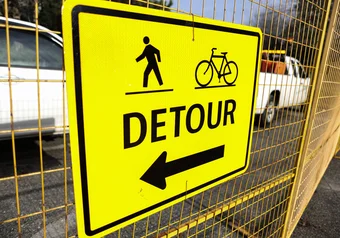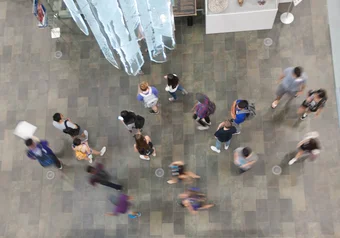BC’s provincial park closures due to COVID-19 have presented UBC Forestry’s Wildlife Coexistence Lab (WildCo) with a very interesting opportunity to collect data on wild animal activity without the presence of humans.
Cole Burton, assistant professor in the department of forest resources management and principal investigator of the WildCo Lab, sees the closures as an experiment “to try and understand how wildlife [respond] to having a lot of people versus having no people [around].”
The lab has been collaborating with BC Parks to study how wildlife, particularly terrestrial mammals, are affected by recreational activities like hiking and camping.
The data sampling in Golden Ears Provincial Park and the adjacent Malcolm Knapp Research Forest started in the summer of 2019 with 60 camera traps taking pictures of roaming animals. WildCo has been collecting the images so they can analyze and understand where wildlife are and how their behavioural patterns are changing in relation to human activities.
Since the parks have been closed to humans, the photos collected by WildCo are showing encouraging signs that cougars and black bears are using trails normally filled with human activity. People in parks can cause the animals stress and displace them from areas with valuable food sources.
One series of snapshots show a female cougar and her two cubs on a well-travelled trail in Golden Ears Provincial Park.
The two cubs have a faint spotted pattern on their coats and are likely around two years old, meaning they’re nearing the age of leaving their mother to be on their own. According to Burton, all three look healthy which is a good sign that the animals have adequate access to food.
“The animals seem to just be happy to be strolling down the trail,” Burton said. This indicates that the animals are less stressed than usual.
Burton speculates that during the park closure, the reduction of human activity will be good for animals as they will be able to move more freely and have greater access to food. In addition — since many animals reproduce in spring — the closure could help their populations by leading to increased reproductive successes.
During the park closure WildCo has collected many exciting photos confirming species in Golden Ears Park. While the lab had an idea of which species inhabit the park, the new photos have been able to confirm the presence of some species. One of the more exciting images is of a spotted skunk, a rare skunk species native to southwestern BC.
However, there may not be major changes for wildlife over the short term period of park closure because they are already well-adapted to avoiding people in the park.
“Even though we may not see them when we’re out there, it’s important to remember that they’re there,” said Burton.
“We might see more wildlife activity during the day because there aren’t people there to disturb wildlife,” Burton continued. When there’s a lot of human activity wildlife can shift their behaviour to become more nocturnal.
“[But] time will tell how much of that we can capture with our cameras.”
WildCo’s camera trapping method is considered to be a non-invasive way of acquiring data as researchers can learn about animal behaviour in a way that doesn’t cause the animal stress. By acquiring more information on elusive species like cougars, researchers are able to understand more about their ecology. This knowledge can be used to better inform conservation activities.
In order to promote human-wildlife coexistence and to inform management and conservation activities, WildCo needs enough images to be able to understand animal behaviour and population response. Yet some people have been vandalizing or stealing the cameras, likely out of privacy concerns.
“People can still have their recreation and parks,” Burton said. “But we don’t have to do that at the expense of the health of the wildlife.”
Share this article
First online





